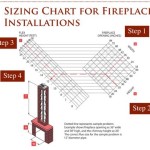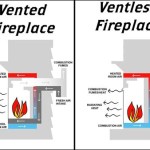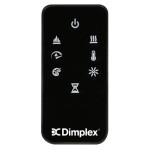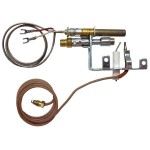Gas Fireplace Fumes: Understanding the Risks and Mitigation
Gas fireplaces offer a convenient and aesthetically pleasing alternative to traditional wood-burning fireplaces. However, like any combustion appliance, they produce fumes. While designed to be vented safely outside, malfunctions or improper usage can lead to the accumulation of dangerous gases indoors, posing significant health risks. Understanding the composition of these fumes, the potential hazards they present, and the necessary preventative measures is crucial for ensuring the safe operation of a gas fireplace.
The primary concern with gas fireplace fumes stems from the incomplete combustion of natural gas or propane. Complete combustion results in carbon dioxide (CO2) and water vapor, which are relatively harmless in small quantities. However, when insufficient oxygen is available during the combustion process, a variety of harmful substances are produced. These byproducts pose immediate and long-term health hazards to occupants exposed to them.
Common Components of Gas Fireplace Fumes
The composition of gas fireplace fumes is complex and varies depending on factors such as the fireplace's design, maintenance, and the ventilation system's integrity. However, several key components are consistently present and contribute to the overall risk associated with fume exposure.
Carbon monoxide (CO) is perhaps the most well-known and immediate threat. It is a colorless, odorless, and tasteless gas produced by incomplete combustion. It interferes with the blood's ability to carry oxygen throughout the body. Even low concentrations can cause flu-like symptoms, while higher concentrations can lead to unconsciousness, brain damage, and even death. Because it's undetectable by human senses, carbon monoxide poses a silent and deadly risk.
Nitrogen dioxide (NO2) is another significant component. It is a respiratory irritant that can cause coughing, wheezing, and shortness of breath. Prolonged exposure can exacerbate existing respiratory conditions like asthma and bronchitis. Children, the elderly, and individuals with respiratory illnesses are particularly vulnerable to the effects of nitrogen dioxide.
Volatile organic compounds (VOCs) are also produced during the combustion process. These are a diverse group of chemicals that can include benzene, formaldehyde, and toluene. VOCs can cause a range of health problems, including eye, nose, and throat irritation, headaches, dizziness, and nausea. Some VOCs are also known or suspected carcinogens, posing a long-term health risk with prolonged exposure.
Particulate matter, though less prevalent than in wood-burning fireplaces, can still be present in the fumes. These tiny particles can penetrate deep into the lungs and cause respiratory and cardiovascular problems. While the specific composition of particulate matter from gas fireplaces may differ from that of wood smoke, the health effects are similar.
Health Risks Associated with Fume Exposure
The health risks associated with gas fireplace fumes vary depending on the concentration of the gases, the duration of exposure, and the individual's susceptibility. Short-term exposure can cause a range of symptoms, including headaches, dizziness, nausea, fatigue, and irritation of the eyes, nose, and throat. These symptoms are often mistaken for the flu, delaying proper diagnosis and treatment.
Long-term exposure to low levels of gas fireplace fumes can have more insidious and chronic health effects. Prolonged exposure to carbon monoxide can lead to neurological damage, affecting cognitive function and memory. Chronic exposure to nitrogen dioxide can worsen respiratory conditions and increase the risk of respiratory infections. Similarly, long-term exposure to VOCs has been linked to an increased risk of cancer and other chronic diseases.
Specific populations are more vulnerable to the health effects of gas fireplace fumes. Infants and children are particularly susceptible because their respiratory systems are still developing. Pregnant women are also at increased risk, as carbon monoxide exposure can harm the developing fetus. Elderly individuals and people with pre-existing respiratory or cardiovascular conditions are also more likely to experience severe health effects from fume exposure.
Beyond the direct health risks, improperly vented gas fireplaces can also contribute to indoor air quality problems unrelated to combustion gases. Condensation from the combustion process can promote mold growth, further compromising the indoor environment and potentially triggering allergic reactions and respiratory problems.
Preventative Measures and Mitigation Strategies
Preventing gas fireplace fume exposure and ensuring the safe operation of the appliance requires a multi-faceted approach, including proper installation, regular maintenance, and the use of carbon monoxide detectors.
Professional installation is critical. A qualified technician should install the gas fireplace according to the manufacturer's specifications and local building codes. This includes ensuring proper venting to the outside and adequate combustion air supply. Improper installation can lead to incomplete combustion and increase the risk of fume leakage into the living space.
Regular maintenance is essential for keeping the fireplace in good working order. This includes annual inspections by a qualified technician to check for leaks, blockages in the venting system, and other potential problems. Cleaning the fireplace regularly can also help prevent the buildup of soot and other debris that can interfere with combustion.
Carbon monoxide detectors are a crucial safety device. These should be installed near sleeping areas and in other locations where occupants spend a significant amount of time. Detectors should be tested regularly and replaced according to the manufacturer's recommendations. When a carbon monoxide alarm sounds, occupants should immediately evacuate the building and call emergency services.
Ensuring adequate ventilation is also important. Even with a properly functioning gas fireplace, it is still advisable to open a window or door slightly while the fireplace is in use to provide fresh air and prevent the buildup of combustion gases indoors. This is particularly important in newer, more tightly sealed homes where natural ventilation is limited.
Finally, homeowners should be aware of the symptoms of carbon monoxide poisoning and other health problems associated with fume exposure. If experiencing symptoms such as headaches, dizziness, nausea, or fatigue while the fireplace is in use, immediately shut it off, ventilate the area, and seek medical attention.

How Long Can You Run A Gas Log Fireplace Vertical Chimney Care

Vent Free Fireplace Odor

How Long Can You Safely Keep A Gas Fireplace Burning

Here S Why Your Gas Fireplace Stinks Full Service Chimney

How To Get Rid Of Fireplace Smell Vertical Chimney Care

Are Ventless Gas Fireplaces Safe Smokeyembers Com

Can Gas Fireplaces Lead To Carbon Monoxide Poisoning
:max_bytes(150000):strip_icc()/ventless-gas-fireplaces-4160746-hero-f9d4bdcd9bd446eb84406de306f790ba.jpg?strip=all)
How To Pick Out A Ventless Gas Fireplace

7 Items You Should Never Burn In Your Gas Fireplace Northco Fire

Vent Free Fireplace Odor








